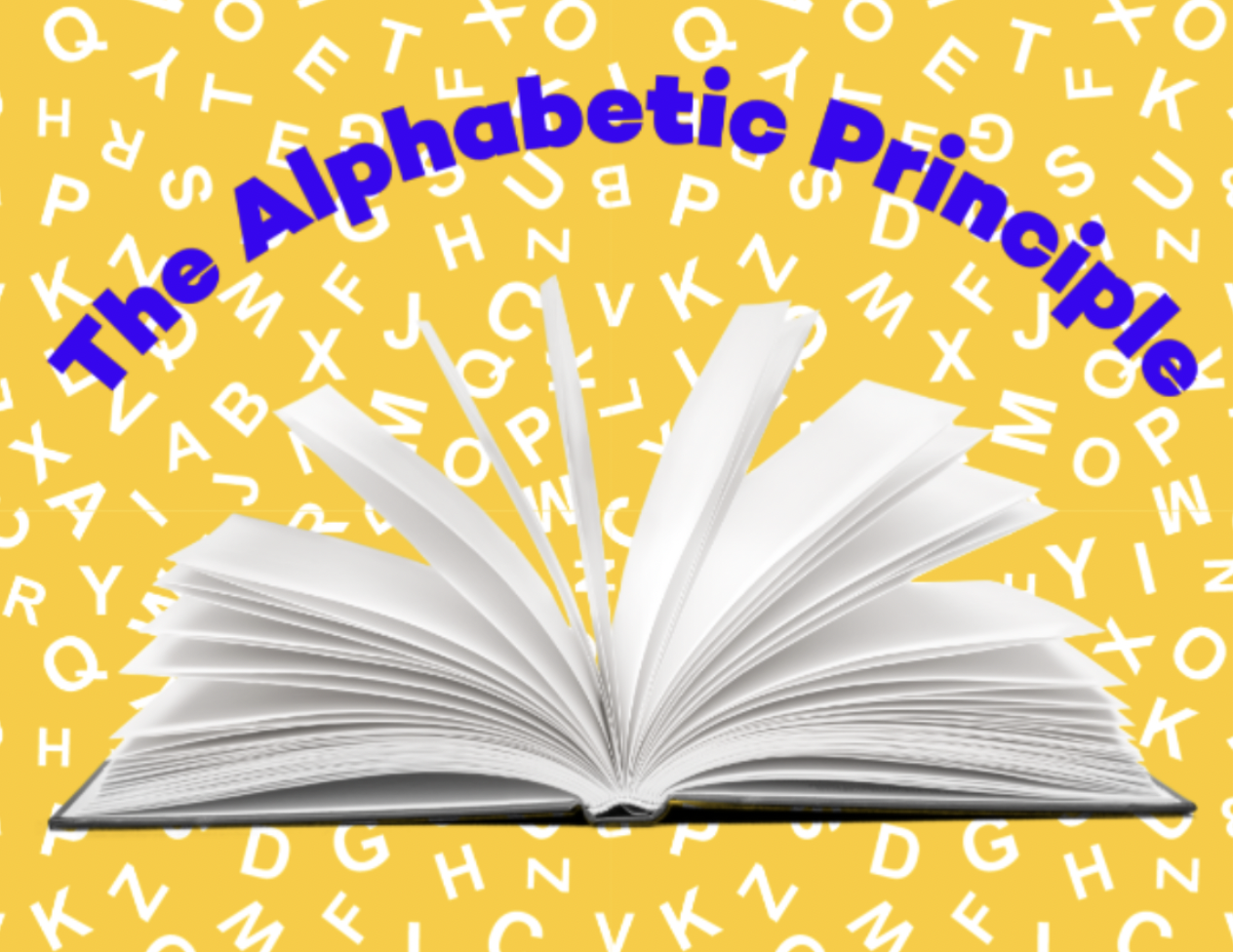
There’s a reason one of the first things students learn in pre-school is the Alphabet song. They need to know letter names and their sounds before they can begin reading words. And music can be a powerful memorization device.
The idea that written letters represent specific spoken sounds is called the ‘alphabetic principle,’ and it is crucial that children build this awareness early. Put simply, the alphabetic principle is what helps children know how to “sound out,” or decode, words.
A big part of the alphabetic principle is phonological awareness, or the ability to recognize that each word is made up of individual sounds (or phonemes). Phonemic awareness, or the ability to recognize and manipulate those sounds, is part of phonological awareness.
Teaching Letter Sounds
Here’s an often-used riddle in early education graduate school courses. A child tries to write a word, and ends up writing ‘hrh.’ What word were they trying to spell? Most graduate students begin by thinking of words that start with the ‘h’ sound, as in the word ‘her.’ And many students guess ‘her’ as the word the student was attempting to write.
Actually, the word was ‘church.’ Any idea how they arrived at this dramatically incorrect spelling? Think about the letter names the student wrote. This child was confusing the name of letter h with the sound it makes. He thought momentarily that ‘h’ made a ‘ch’ sound. This example is often quite eye-opening for teachers, who immediately realize after seeing this how important it is to teach letter sounds in tandem with teaching letter names.
How and Why to Teach The Alphabetic Principle
It isn’t enough for children to be able to recognize sounds in words and associate written letters with spoken sounds. They also have to be able to apply those skills to reading words. They need to fully grasp the concept of the alphabetic principle. So how do we get our students there? Here are some tips for teaching the alphabetic principle in your classroom:
- Don’t teach too much at once! Students should be introduced to at most 4 new letters/letter sounds per week or less. This makes it easier for the new information to stick, and prevents students from feeling overwhelmed.
- Keep in mind that students learn at very different rates. Some will grasp the alphabetic principle quite quickly, while for others, it could take some time.
- Integrate the alphabetic principle with phonemic awareness. While building phonemic awareness by having students practice identifying sounds in words aurally, also begin to incorporate practice that comes from visually identifying those sounds. For as much time as students spend looking at a picture of a shoe and making the /sh/ sound with their voice, they should also be looking at the letters /sh/ and visually recognizing them as the beginning sound, too.
- Use multi-sensory tools. Kids love when they get to use their hands. Any activity that does not involve a pencil and paper will be highly motivating to them, especially if they get to create something. Anything from magnetic letters to play dough will help kinesthetic learners.
What about words that don’t follow the alphabetic principle?
There are, of course, exceptions to every rule. Students won’t be able to use the alphabetic principle to read words like “said” and “meant.” These types of words are called irregular words. They have to be learned by heart in order to be decoded. Sometimes they are called sight words, or snap words. They are common enough that students should eventually know how to read them automatically without having to decode any part of the word.
Conclusion
Teaching the alphabetic principle is essential to helping students become confident, independent readers. It’s important to introduce new concepts slowly, and to make sure that students are practicing with a variety of materials and in different ways. And finally, don’t forget to teach those irregular words!
FAQ About the Alphabetic Principle
What is meant by alphabetic principle?
The alphabetic principle is the idea that letters represent sounds, and that those sounds can be used to read and spell words.
What is an example of the alphabetic principle?
An example of the alphabetic principle would be teaching a student that the letter ‘c’ makes the ‘k’ sound, as in the word ‘cat.’
Why is the alphabetic principle important?
The alphabetic principle is important because it is the foundation for learning how to read and spell words. If students do not understand the alphabetic principle, they will have difficulty with these skills.
What are the stages of the alphabetic principle?
The stages of the alphabetic principle are:
- Letter-sound correspondence: This is when students learn that each letter has a corresponding sound.
- Blending sounds: This is when students learn to blend individual sounds together to form words.
- Segmenting words: This is when students learn to break words down into their individual sounds.
- Manipulating sounds: This is when students learn to change the order of sounds in words to create new words.
What is the difference between alphabetic principle and phonological awareness?
Phonological awareness is the ability to hear, identify, and manipulate the individual sounds in words. The alphabetic principle is the idea that letters represent sounds, and that those sounds can be used to read and spell words. Phonological awareness is a prerequisite for the alphabetic principle. This means that students must have a strong understanding of phonological awareness before they can begin to learn the alphabetic principle.




